Let’s explore 10 famous spots that visitors should not miss when coming to the metropolis of Vietnam.
Ao dai Museum
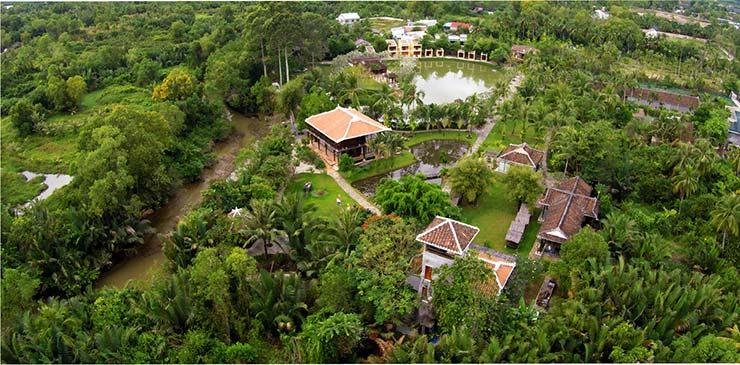
Ao dai Museum is one of the 10 interesting tourist spots in Ho Chi Minh City and the only museum of Vietnam where the stories of the Vietnamese Ao dai throughout history have been preserved and honoured. About a 30-minute drive from Ho Chi Minh City centre, the museum owns a peaceful, green space in the middle of bustling Ho Chi Minh City, covered in the green of nature and the nostalgia of ethnic architecture. Ao dai Museum is a unique project aiming to preserve documents and artefacts about Ao dai - the traditional costumes of the Vietnamese people, imbued with cultural values and the soul of Vietnamese women.
Address: 206/19/30 Long Thuan Street, Long Phuoc Ward, District 9
War Remnants Museum
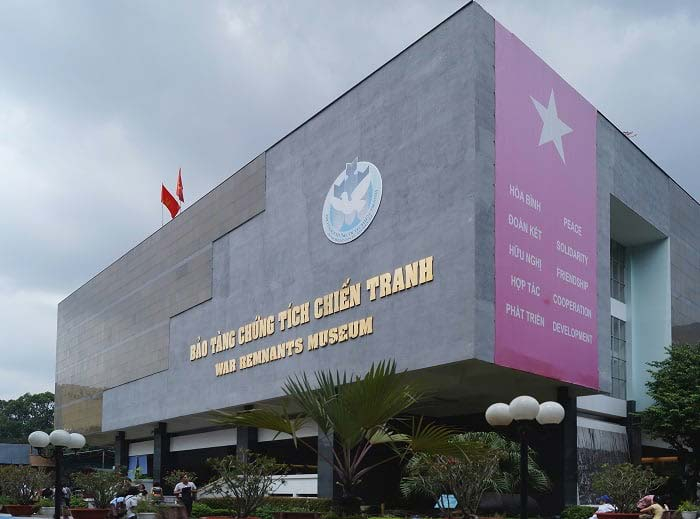
History enthusiasts would love this place since the museum is a place in Vietnam to systematically study, collect, conserve and display exhibits on war crimes and consequences inflicted on the Vietnamese people by foreign aggressive forces.
The War Remnants Museum is a member of the International Network of Museums for Peace (INMP) and the International Council of Museums (ICOM). Visitors will have a chance to admire documents, images, and artefacts that portray the devastating consequences of the war in Vietnam. At the same time, the museum also conveys the message of the fighting spirit, the struggle to protect national independence and freedom and the preciousness of peace and friendship between peoples.
Address: 28 Vo Van Tan Street, Vo Thi Sau Ward, District 3
The History Museum of Ho Chi Minh City
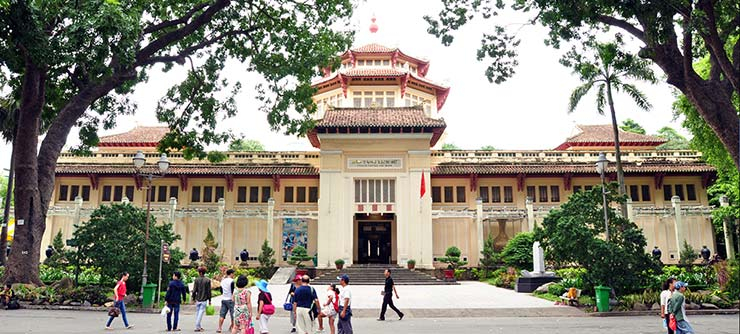
Once the French building a century ago (in 1929) with typical "innovative Indochina" style, The History Museum of Ho Chi Minh City owns collections representing thousands of years of Vietnamese history and culture, learning about the cultural characteristics of the Southern region and some countries in the Asian region. Over 43,000 documents and artefacts, including 12 national treasures introduced in the galleries, will be invaluable gifts of historical and cultural knowledge which are displayed to the public.
Address: 2 Nguyen Binh Khiem Street, Ben Nghe Ward, District 1
Ho Chi Minh City Museum of Fine Arts
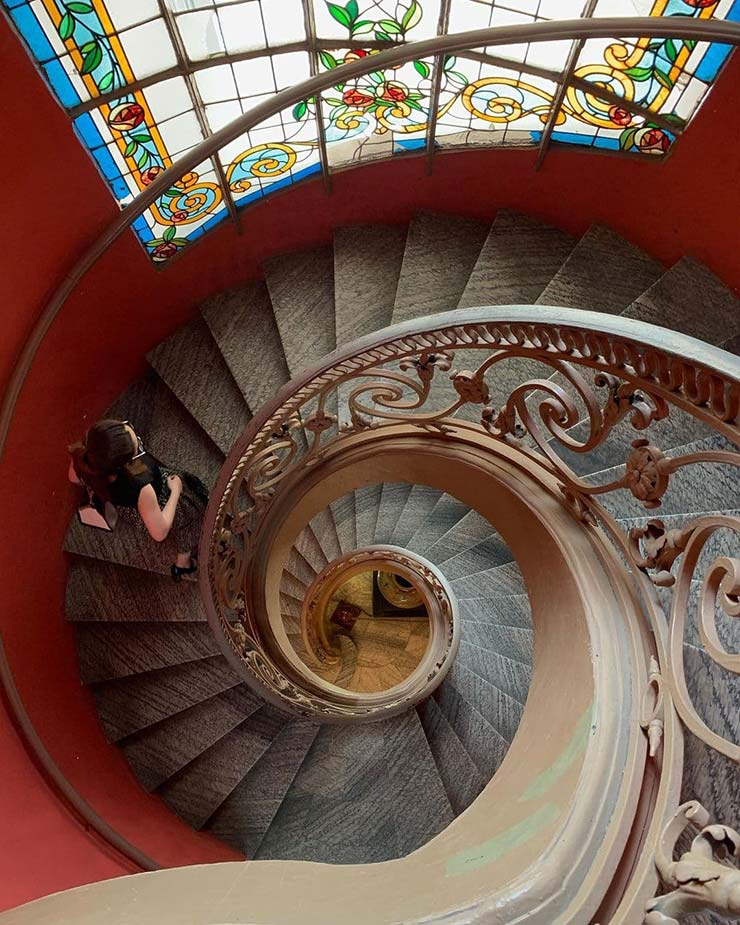
Ho Chi Minh City Museum of Fine Arts was established in 1987 and officially went into operation in 1991. It has witnessed the ups and downs of history as well as the rise of Ho Chi Minh City. The museum is not only considered an interesting place to discover fine arts in the city, including its magnificent and somewhat beautiful appearance from the unique interference between the architectural beauty of the East and the West; but also the story behind it. At the beginning of its foundation, under the patronage of a contemporary art centre, The wife of a famous artist, rented a room in this museum and turned it into a platform of contemporary art, where various workshops, exhibitions, and performance events were held in the following years.
What to see in Ho Chi Minh City Museum of Fine Arts? The answer is plenty of masterpieces. Ancient Bronze Sculptures in South Vietnam, Champa Ancient Sculptures, the Statues in Tay Nguyen Tombs, Vietnamese Ceramics (11th-20th century), Southern Fine Arts (18th-20th century) and Contemporary Art are displayed here.
Address: 97A Duc Chinh Street, Nguyen Thai Binh Ward, District 1
Reunification Palace
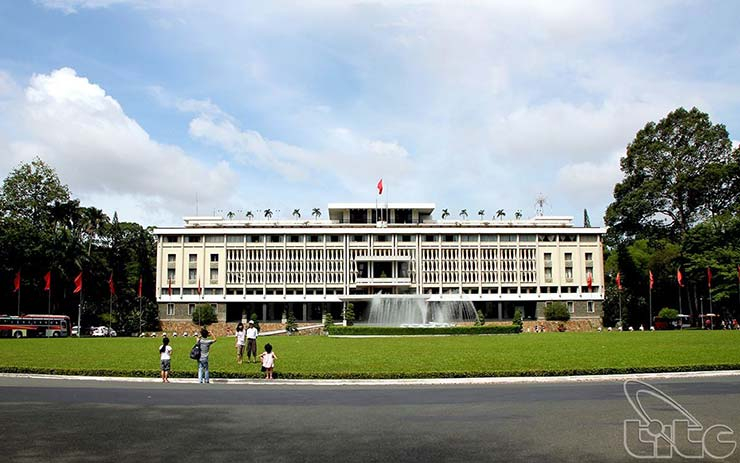
Reunification Palace is a special national monument of Vietnam. The place has been an important piece of historical evidence of Vietnam, where many major historical events took place and witnessed, directly affecting the historical process of Vietnam, especially the liberation of the South and reunification of the country on April 30, 1975. The building was designed in the retro style of the 1960s, showing the talent and ingenuity of architects as well as builders. It has more than 100 rooms decorated to suit each use, including the chamber, the room for referring credentials, strategic operations department room, the ballroom, the residence of the Presidential family, the movie room, the reading room and many more. The War Remnants Museum is behind the Palace.
Address: 135 Nam Ky Khoi Nghia Street, Ben Thanh Ward, District 1
Landmark 81 SkyView
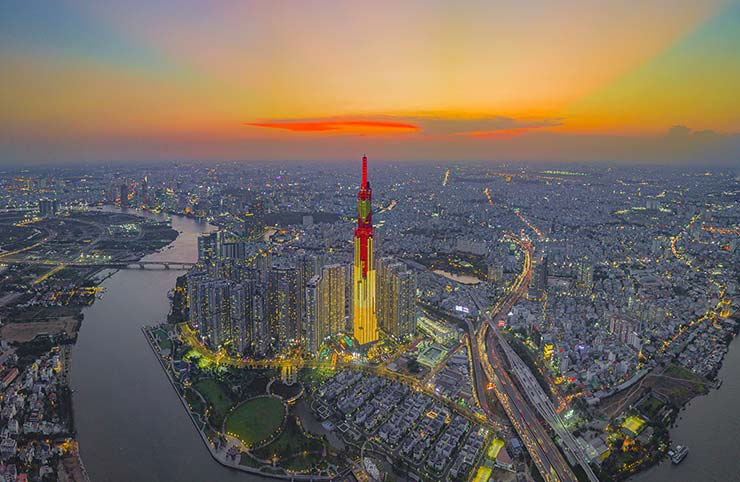
Landmark 81 is inspired by the image of a traditional bamboo bundle and is recognized as the tallest tower in Vietnam until now. With a height of 461.2 metres, visitors can enjoy the panoramic view of the city through a transparent glass system, capturing the whole view of the city from above.
Address: 720A Dien Bien Phu Street, Ward 22, Binh Thanh District
Thieng Lieng community-based tourism destination
Thieng Lieng is a hamlet located deep in Thanh An island commune (Can Gio District) and is widely known as a community-based tourism destination with many unique features and exciting experiences to tourists. Visitors to the hamlet will enjoy a fresh atmosphere with no dust, no stress, no traffic jam. Places to explore Thieng Lieng Hamlet include Giong Chua mountain, the only rocky mountain in Ho Chi Minh City, vast, white salt fields…
Saigon Ranger Monument System
To visitors’ surprise, this place is one of the rare pieces of historical evidence in the heart of Ho Chi Minh City, located on the alley connecting Nguyen Dinh Chieu and Vo Van Tan streets (District 3). This “red address” marks the victory of the Saigon rangers, consisting of a secret basement that once hid nearly 2 tons of weapons of the Saigon rangers to attack the Independence Palace during the 1968 Tet Offensive. The house is recognized as a National Historical-Cultural Monument.
Visitors can also visit the Saigon Ranger Monument System scattered around the city, including Museum of Intelligence-Saigon-Gia Dinh Rangers, Secret mailboxes and floating bunkers of the Saigon Rangers, Secret weapons bunkers of the Saigon Rangers...
Address: 287/70 Nguyen Dinh Chieu Street, District 3
Cu Chi Tunnels
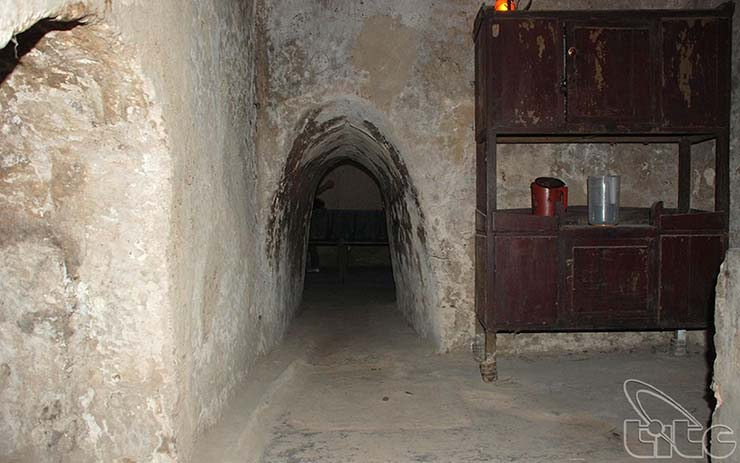
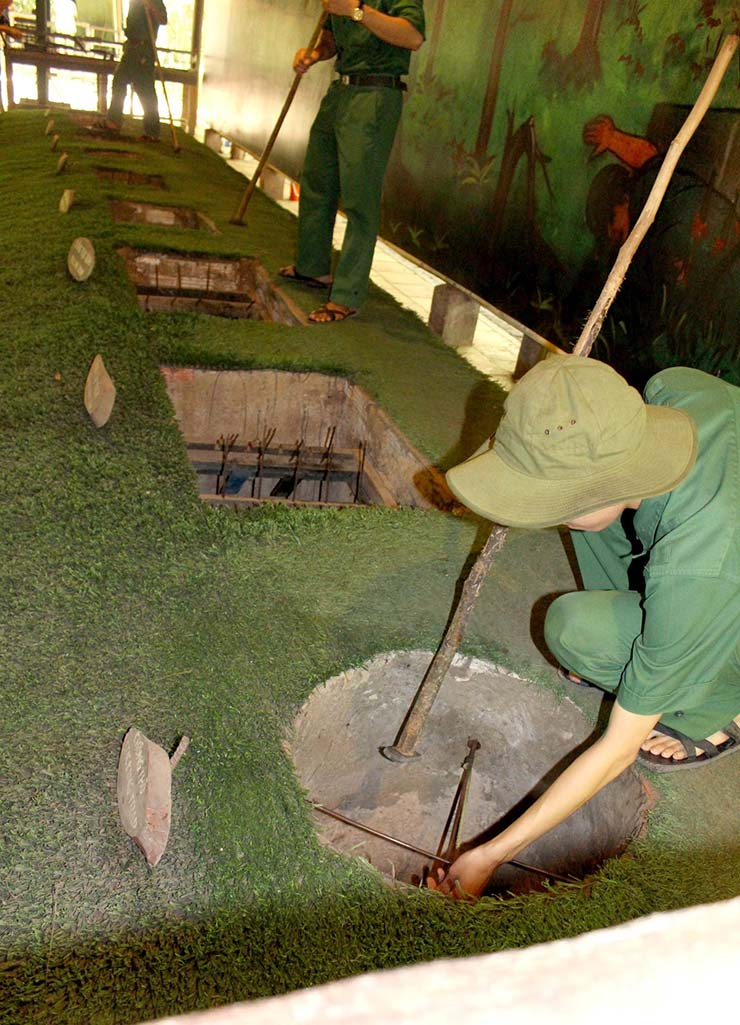
Located about 70 km from the centre of Ho Chi Minh City to the northwest, is a vast network of subterranean tunnels. This tunnel system will bring a completely different and equally adventurous experience of the South of Vietnam. It is a unique war-fighting wonder, dubbed the “underground maze” with about 250 km of tunnels spreading like spider webs in the ground: trenches, emplacements, fighting nests, bunkers for dining, sleeping, meetings, activities, military medicine, food storage warehouses, wells, kitchen... Travellers will get to know about real events that happened in this tunnel, the story of the wars from the ground between Vietnamese soldiers, compatriots and invaders during the period 1945 - 1975.
People with Claustrophobia should be in notice.
Address: Provincial Road 15, Phu Hiep hamlet, Phu My Hung commune, Cu Chi District
Notre Dame Cathedral - City Post Office
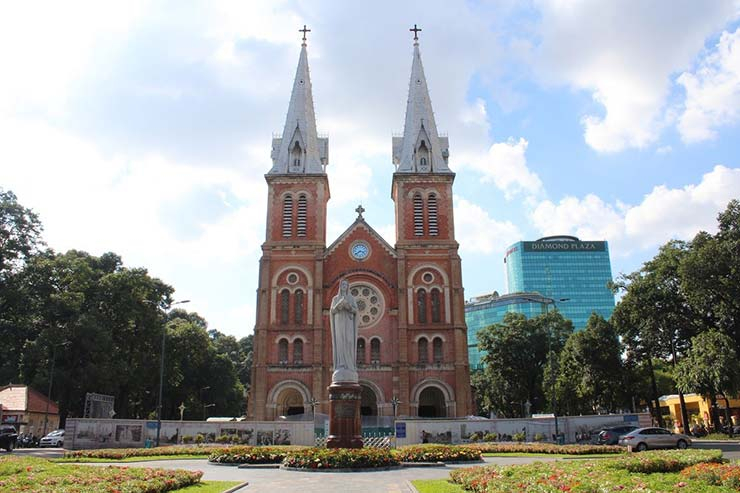
Notre Dame Cathedral (official name is the Cathedral Basilica of the Immaculate Conception) is the largest and most unique church in Ho Chi Minh City - one of the unique architectural works with two 60m-high bell towers. Notre Dame Cathedral was built on 7th October 1877. This is one of the unique religious architectural works that attracts the most visitors in the city.
Address: 1 Cong Xa Paris Street, District 1
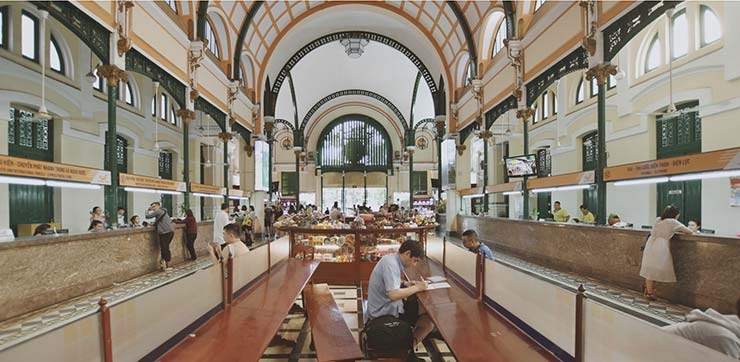
Next to the Notre Dame Cathedral, Ho Chi Minh City Central Post Office is an old French building with a unique Gothic architectural style according to the design project of Architect Villedieu and his assistant Foulhoux. The building is ranked second in the list of 11 most beautiful post offices in the world voted by the American architectural magazine Architectural Digest. Although there are no longer as many services as other post offices, Sai Gon Post Office is still open daily to serve tourists and city residents with services such as timed numbered parcels, flowers, gifts, express delivery, souvenirs. In the centre of the post office's entrance stands a large clock with a classic design, and below it, the years of construction and inauguration of the post office are engraved. Right after entering the post office, there are two maps depicting the history of Sai Gon's communication system: the right map showcases Sai Gon and its adjacent regions in 1892, while the left map displays the telegraph lines of Vietnam and Cambodia in 1936... The interior of the post office hosts a variety of souvenir items and postage stamps depicting the country and its people, offering visitors the chance to explore and purchase meaningful souvenirs.
Address: 2 Cong Xa Paris, District 1




